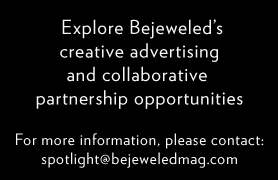PAT SALING TALKS RENOWNED JEWELERS, GEMS AND ICONS
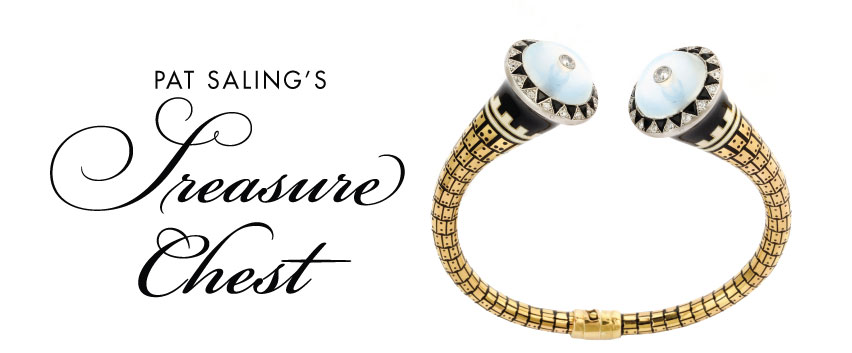
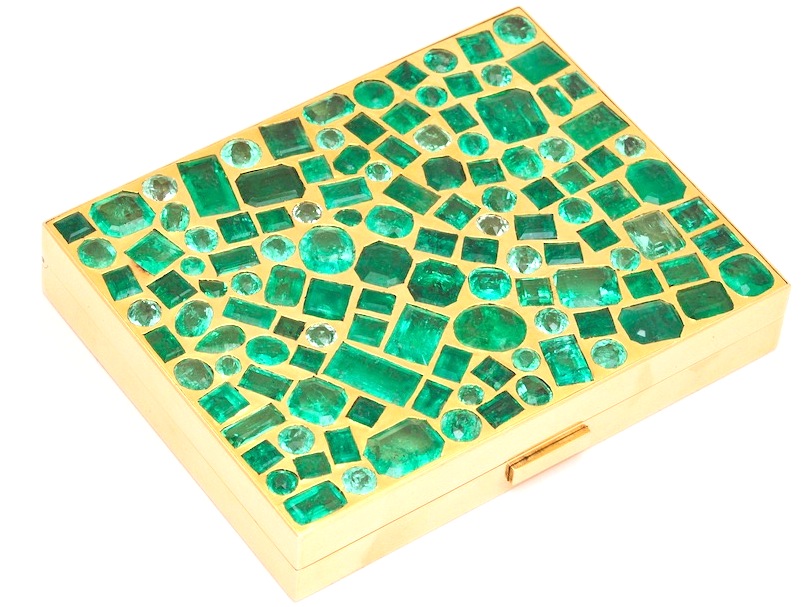
From Pat Saling’s personal collection: Emerald compact in gold by Belperron circa 1935 shown in a Vogue ad in the Belperron book
If you aren’t already familiar with Pat Saling, it’s time to get to know her. Her first full-time job in the jewelry business was working for the legendary Fred Leighton, where she agreed to work for a month and wound up staying 21 years, dealing with the shop’s celebrity clients, world-renowned dealers and the most striking and rare jewels. While at Leighton she oversaw the sale of Maria Felix’s emerald and yellow diamond crocodile necklace to a client, whose estate then sold it years later back to Cartier, where it resides in the house’s permanent collection.
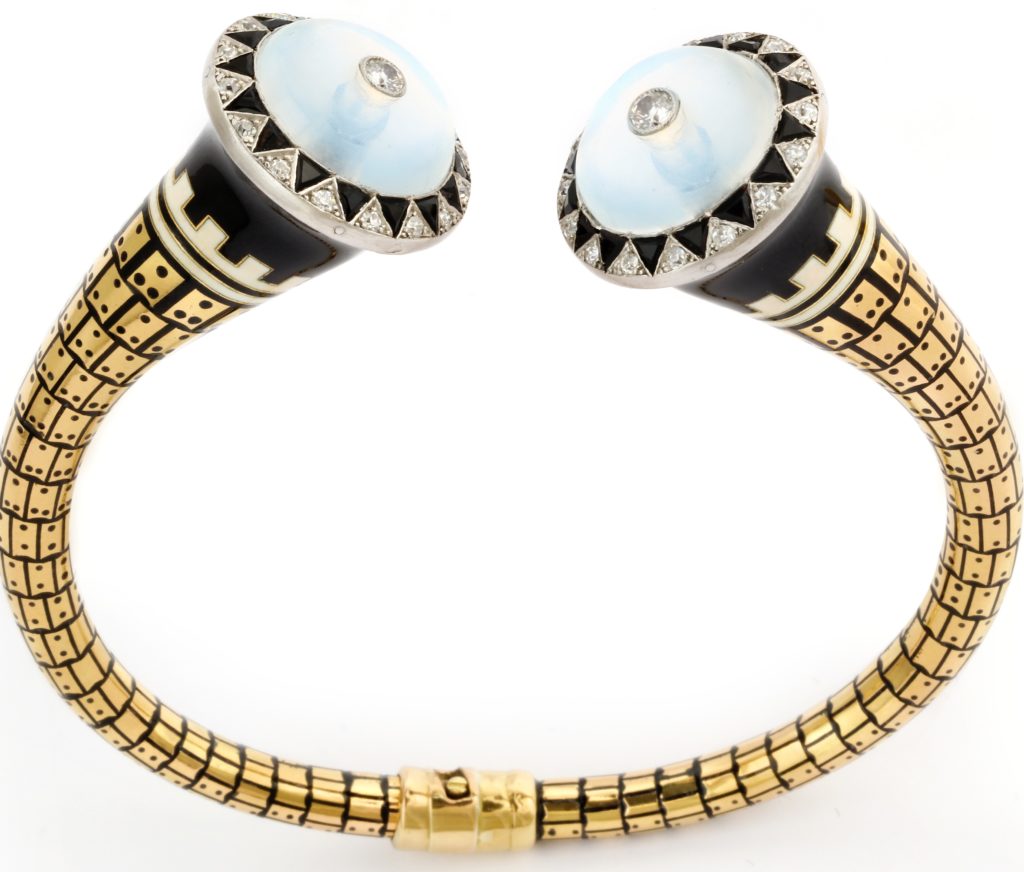
Rare enamel moonstone onyx and diamond “Sudanese” bracelet by Cartier Paris circa 1919
When Pat left Fred Leighton and opened her own antique and vintage jewelry business 15 years ago, she sought out collectible, museum quality pieces — and began to list leading actresses, award winning singers and royalty among her clientele. One of her first clients was Imelda Marcos. Although the general public associates Marcos with her shoes, “she was a huge jewelry buyer,” say Pat, who recalls, “she often stayed up all night and slept during the day. On more than a few occasions I would get a call at about 5 a.m. and was told that she wanted to see some jewelry. I would get up, get dressed, go to the safe and fill up a bag with jewelry and be at her house within an hour. Often she would have gone to bed by then and I would simply wait until she woke up so that I could have my appointment with her.”
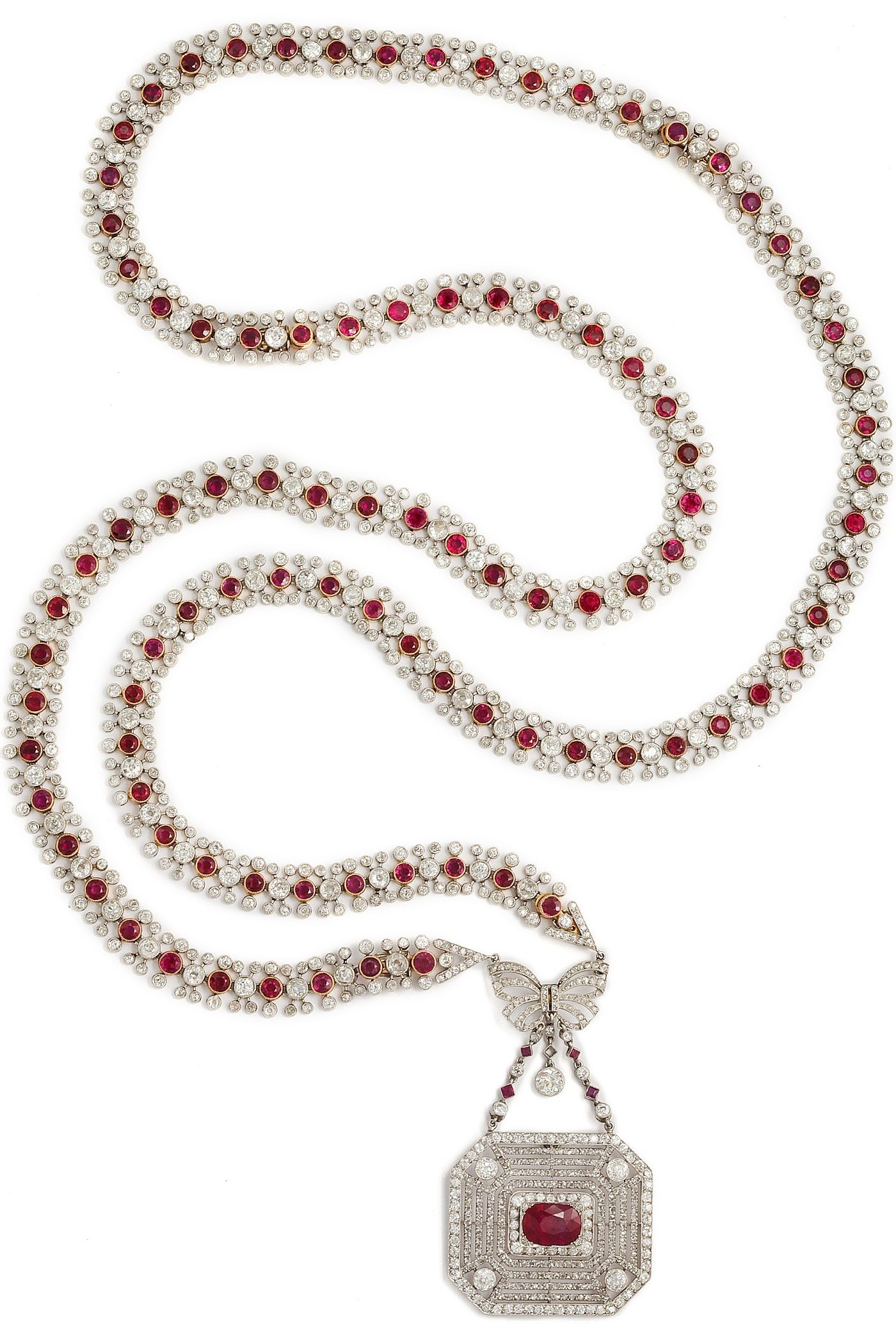
Pat Saling’s antique ruby and diamond sautoir
Pat’s selection of jewels is highly curated and spans from Georgian through mid-century. Funny, down-to-earth and seriously knowledgeable, she will talk jewelry with anyone who seems interested in a piece. The first time I met her, I fell for a Georgian en-tremblant brooch. She knew I could not afford the piece but was fascinated with it and began to show me other en-tremblant brooches of the time period with as much enthusiasm as if she had a closed deal. “One of the things I love most about the antique and vintage world is the people, the energy, excitement and conversations that are inspired by certain pieces,” Pat explains. “The other part is the constant hunt and never knowing exactly what’s around the corner.”
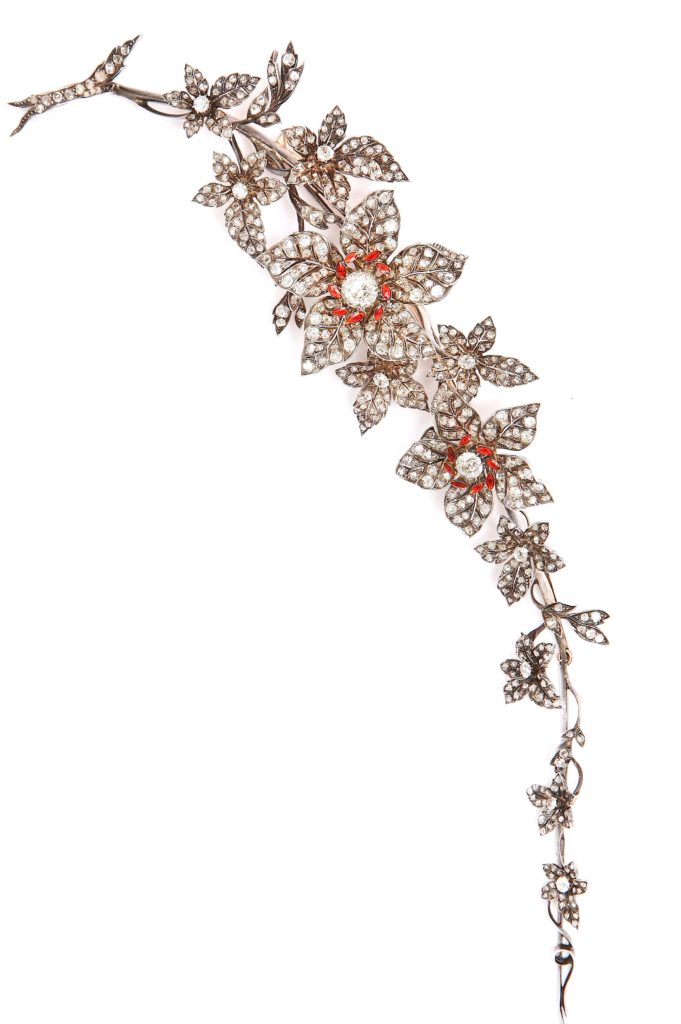
Pat Saling’s Georgian floral spray brooch
Here Pat talks about the unexpected path that led her into jewelry, her days at Fred Leighton and owning her own business, as well as the famous pieces that she has sold and those that are still to come…
Beth: Speaking of going in a different direction than expected, didn’t you land in the jewelry business by pure accident?
Pat: Yes. I had never planned or had any interest in jewelry when I was young. I went to college for a degree in sociology and my goal was to work with underprivileged women and children. But life is strange and there are always forks in the road. I did always enjoy looking at old houses, reading about history and discovering something new. My mother was from the South and when we would go down there to visit relatives, one of my favorite things to do as a child was walk through one of the old mansions and imagine who lived there and what their life was like.
Beth: So, would you say that perhaps your path found you?
Pat: I believe so. That interest has remained strong all of these years and eventually became a big part of my career. Researching and learning the history is as important and as exhilarating as finding fabulous pieces. I am just as inquisitive today, but instead of old houses it’s about the who, what, why and when of jewelry.
Beth: What was your first experience with jewelry?
Pat: My husband’s first job was selling loose diamonds and colored stones, which he obtained through a family friend. I was unemployed and looking for work at the time. One of my husband’s clients, who owned an antique jewelry store in New Jersey, was asking around for someone to help out at the Park Avenue Armory antique show. And while I had absolutely no experience with stones or jewelry, she asked if I wanted to work with her for three weeks setting up and selling a the show. It was a completely new environment for me. But a strange thing happened while I was there; I found I had an affinity for these beautiful things that I was looking at and touching and seeing up close and personal for the first time. I wound up going to the GIA and took their diamond and colored stone courses but the real learning experience was in the handling of these amazing pieces.
Beth: How did you start working at Fred Leighton?
Pat: It was in the 1970s, when the shop was located in Greenwich Village and selling Mexican wedding dresses in the back of the store, with just a few jewelry cases in the front of the shop. I was recommended by a jeweler who did jobs for the shop. But I wasn’t sure that working in a retail environment was what I wanted to do, so we made a deal that I would try it for a month. I wound up staying there for 21 years and learning so much. By the time I left, Fred Leighton was on Madison Avenue for quite a number of years and became the epicenter of extraordinary antique and estate jewelry from different time periods. I was very fortunate in those years to see and deal with all these amazing jewels and to form relationships with the people I met.
Beth: Why did you leave?
Pat: When my son was 5 years old, I decided that it was time to make another change so that I would be able to spend more time with him and be there for the homework, ball games and school fairs that were going to be in my future. I felt that I would have more control over my own time if I struck out on my own. It’s been 15 years since started my own company. In addition to being there for my son, my business has allowed me to travel all over the world searching for the rare and unique pieces that my clients collect.
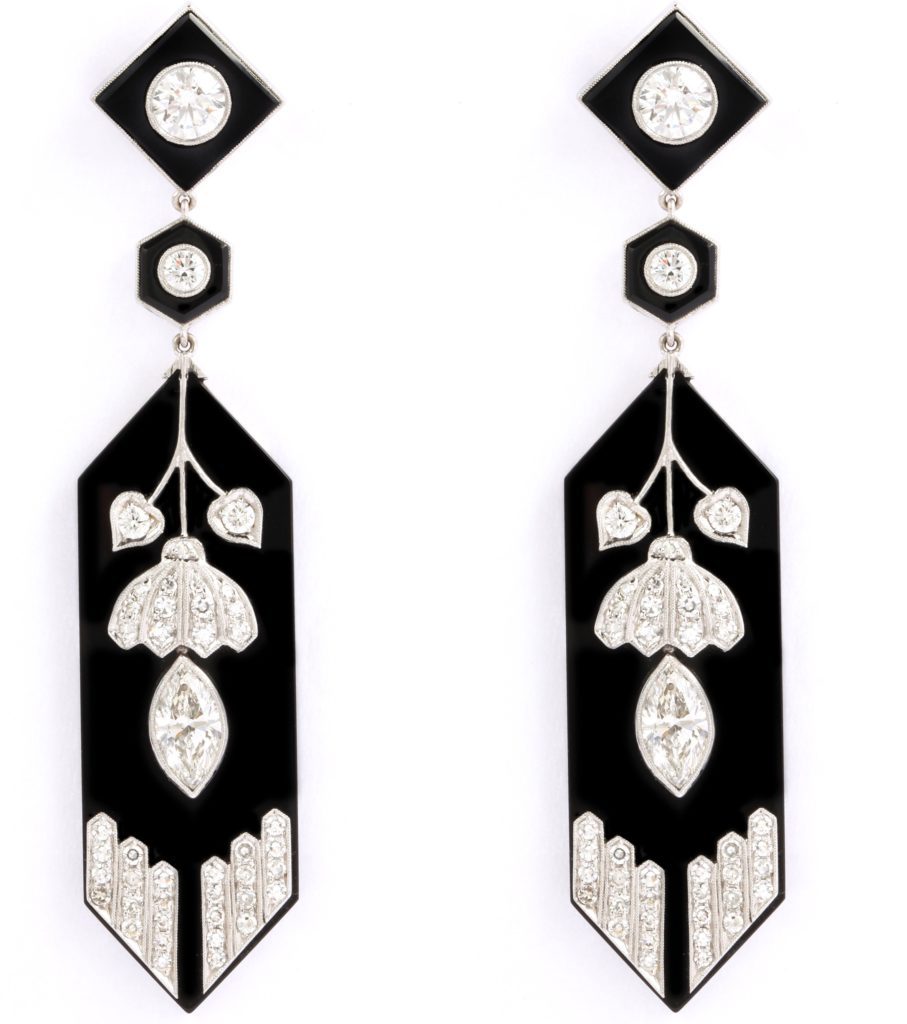
Pat Saling’s Art Deco black onyx and diamond earrings
Beth: Can you talk about some of your famous collectors?
Pat: I can’t name all names—many of my clients like to stay anonymous, but I can talk about some. As we discussed, Imelda Marcos was a client for some time. I do have royal clients from different parts of the globe. It is interesting to learn the customs of the different cultures. I was meeting one of my Far East clients for the first time—a princess. I went through this incredibly carved door and was sent down a long marble hallway. All of her ladies in waiting were on their knees and one of them was moving. …on her knees directing me toward where the princess was. I will do a lot to make a sale but I thought—I am going to ruin my knees on this marble floor. But, I was brought to one side of the room and given a seat and I found out that no one’s head in the princess’s company could be higher than hers. My knees were saved and I gained a new client.”
Beth: What are some of the famous pieces that crossed your path?
Pat: You mentioned briefly Maria Felix’s Cartier crocodile necklaces I was involved in selling while at Fred Leighton. We sold it to one of our important clients whose estate sold it years later back to Cartier, and the piece is now part of the house’s archives.
I sold my first piece of Belperron in 1981 and had been supplying collectors and clients with her work long before she exploded onto the market. I find her to be a remarkable woman who was so far ahead of her time. Her designs can be as contemporary as any jewelry created today, but she was doing it 80 years ago. I also think of her as a sculptor as well as a jeweler since her pieces take on a life of their own when worn. She was a woman making jewelry for a woman’s body and her attention to detail: how a ring fits on the hand or an earring on the ear is still amazing.
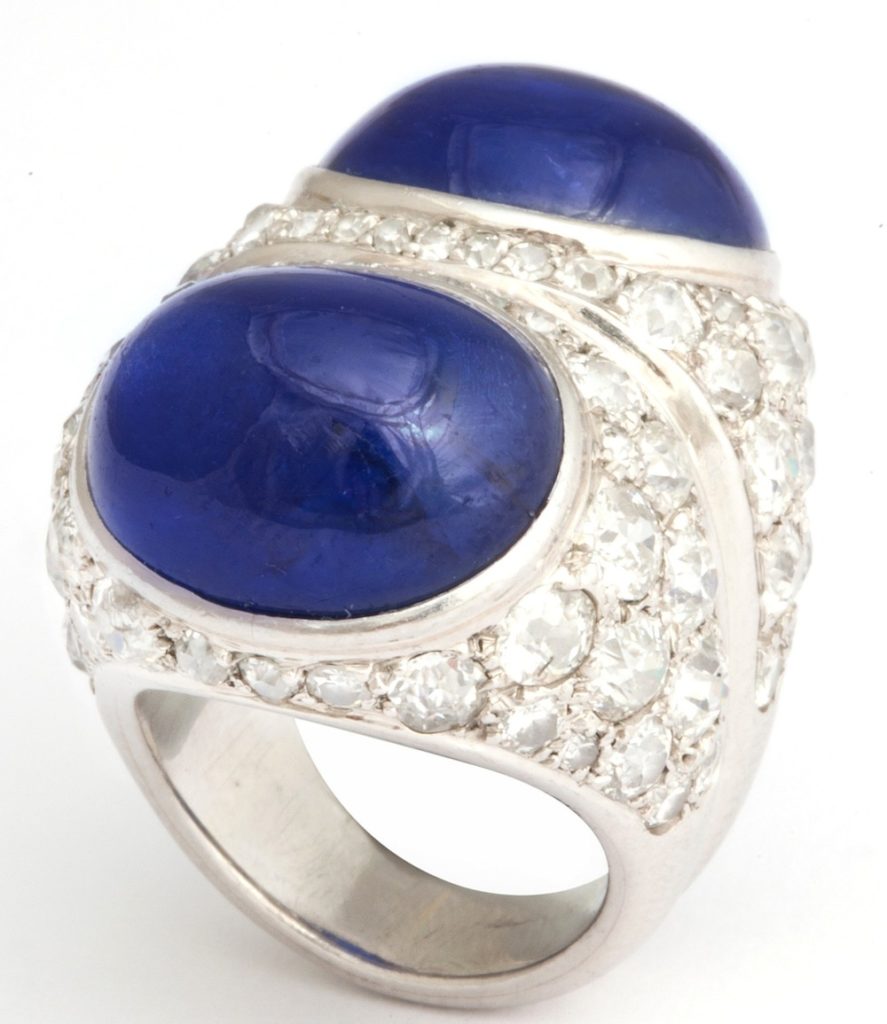
Pat Saling’s Sapphire and diamond ring in Platinum by Belperron. Originally in Suzanne Belperron’s personal collection
Although my main interest lies in finished jewelry, I do enjoy selling special diamonds and gemstones. A few years ago, I sold one of the most important gems that I have worked with, which I originally saw while working at Fred Leighton. It is called the Dudley Pearl and I had the good fortune to opportunity to broker the pearl when the customer was ready to sell. It is one of the most magnificent pearls I have ever seen; complete perfection in shape and luster.
Beth: How would you describe your sensibilities about the business of jewelry?
Pat: The key to my business is being able to provide the rare and unusual pieces of jewelry similar to those I had dealt with at Fred Leighton but at prices that do not reflect a Madison Avenue overhead. My inventory is based on my aesthetic—I buy what strikes me on an instinctual level and the pieces I would want to own. My taste covers a broad range, from Georgian to the mid 20th century. Over the years I have tried to curate my inventory and develop point of view with an emphasis on impeccable quality in terms of design and gemstones rather than a specific time period.
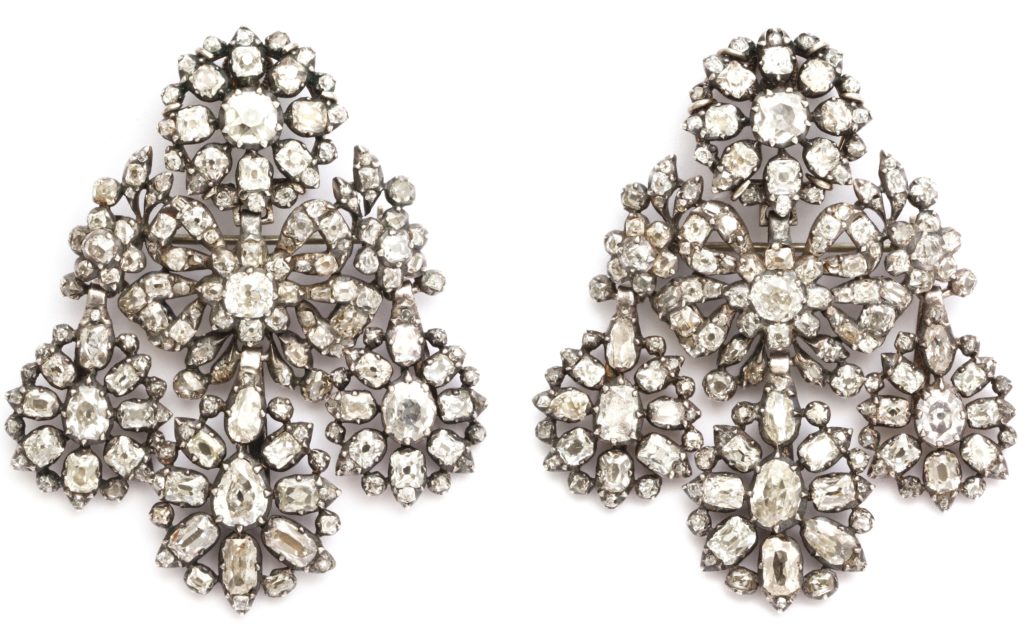
Georgian diamond girandole earrings
Beth: Where do you sell?
Pat: I participate in a few U.S. antique shows throughout the year and I have an office where I see my clients by appointment. I find that I often go to the client’s house where they can be more comfortable trying on jewelry. At home, they are in their own lighting and can really see how prospective new pieces will look with those they already own as well as how they look with their clothes.
Beth: Has today’s antique and vintage jewelry market changed from when you began?
Pat: I find today is different than when I first entered the business. In those days, the great icons of style were followed by the magazines and stylists of the day to see what they were wearing. Over the past 20 years or so that has changed and now it is the stylists of celebrities and magazines that dictate what should be worn. This is mostly due to the huge emphasis on branding that has exploded in fashion and jewelry.
There are other changes as well. When I was working at Fred Leighton, a piece of jewelry stood on its own merit. If it was signed by a particular house, then that was wonderful, but the focus was on the quality of the piece. Today, the first question that I am usually asked is ‘Is it signed’?
And, I explain that there were many independent jewelers who created magical pieces and never signed them. But that doesn’t take away from the quality, value or unique character of the jewel. The perfect example is the extraordinary Suzanne Belperron whom we spoke about earlier and who never signed her pieces.
Beth: Do you view rare jewels as an investment?
Pat: I never sell a piece an ‘investment.’ But with that said, there are many pieces of jewelry, which I would happily buy back for a price way above what I sold it at. Prices of antique and vintage jewelry continue to go up dramatically due to the rarity of and shortages of fine period pieces and exceptional stones on the market.
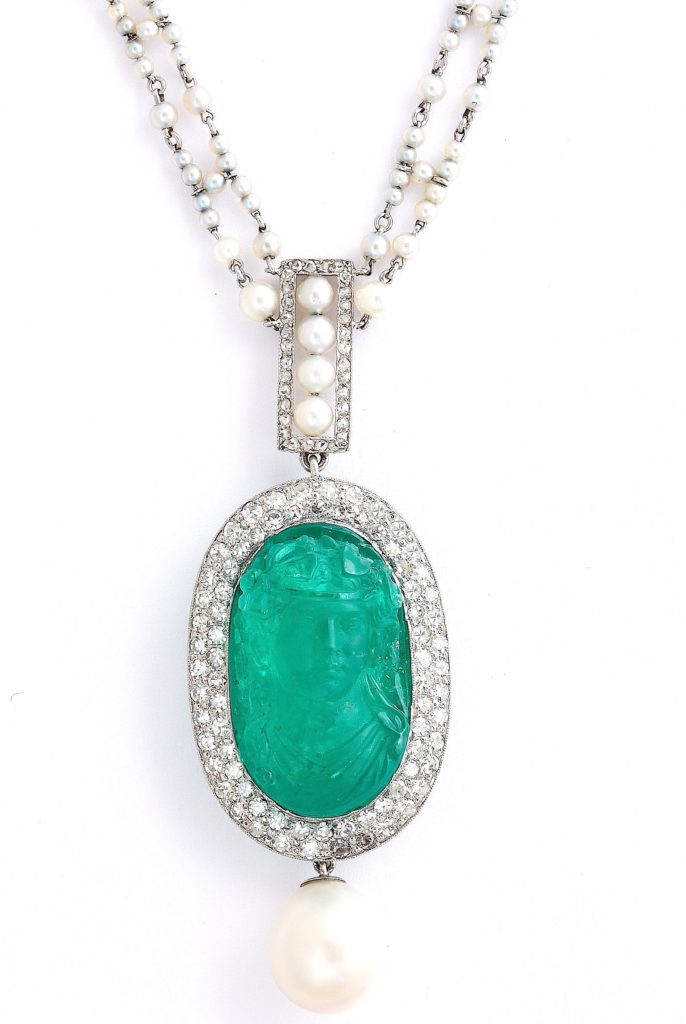
Pat Saling’s emerald 19th century carved cameo with diamonds and natural pearls
Beth: What is your favorite part of being in this business?
Pat: Its twofold: I really enjoy the people and the relationships I have built. I have met and sold to a very diverse group of women and men and I never tire of meeting someone new and finding out what their passion is and exploring it with them. I also love the hunt and finding an incredible piece. It excites me as much as when I started.
I feel very fortunate to be in a business that I love, one in which I can consistently learn, continue to gain knowledge. be surprised and surrounded by extraordinary beauty.




